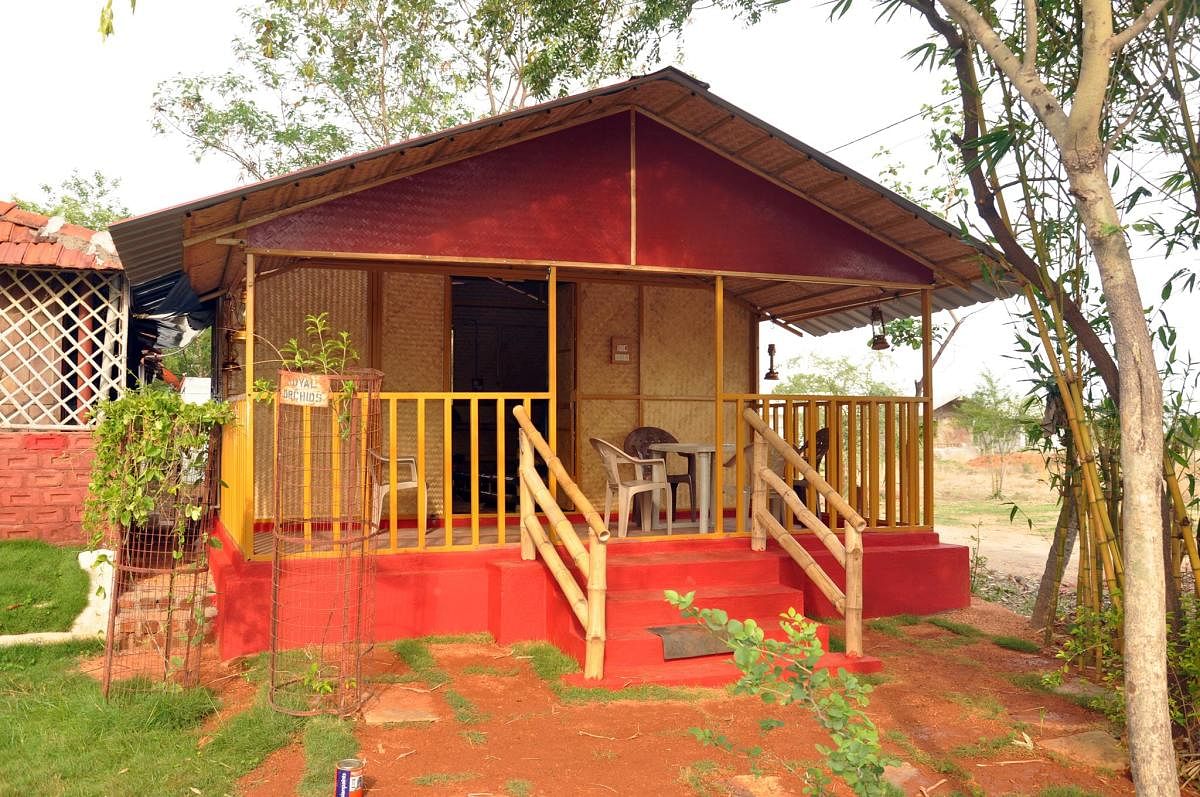
How many of you would go to a risky area near the border of the country to buy a sofa set immediately after your marriage?” asked Prashant Lingam, co-founder of the non-profit organisation Bamboo House, at a talk held in Hyderabad. Prashant and his wife Aruna Lingam ended up in a small village called Katlamara on the Indo-Bangladesh border in 2006, in search of an eco-friendly sofa set as per the wishes of Aruna. This was because their search for an ‘ideal’ sofa did not yield any result in Hyderabad, their hometown!
Katlamara opened up their world to the vast benefits of furniture made from the widely available bamboo in the north eastern states of India. After seeing local artisans work with bamboo, the couple decided to build houses with the grass. They spent one year on a kind of study tour, researching and staying across multiple forest locations in India and launched their non-profit organisation Bamboo House India in May 2008.
Deep in debt
The initial days saw many hurdles. They survived a bomb blast and later Prashant was held captive in a risky area, which was not friendly for non-locals to visit. Added to this, their family members were not very supportive. However, the couple persisted and spent three years experimenting and researching to arrive at the best working model.
“This pushed us into a debt of Rs 60 lakh and we became a laughing stock among family and friends,” said Prashant. With a child to take care, health issues and mounting debts, life was a struggle at one point. The turning point for their firm was their first project, when a school principal approached them to build a bamboo house on the terrace of their school.
The couple built 150 houses over the next two years. They had finally arrived and there was no looking back. They sourced their bamboo from the north eastern states of India, thereby providing employment and empowering artisans from the region. They later diversified and brought out products like furniture, lamp shades and cycles, thereby providing more employment opportunities and connecting many more artisans.
Advantages of bamboo
A typical concrete house has a room temperature of 25-30 degrees, while a bamboo house is cooler by 2-3 degrees as per a study published in the Lancet. Bamboo is preferable to wood as it generates 35 per cent more oxygen than a forest cover of equal area; it is earthquake resistant, supports rural artisans and has a good water retention capacity.
Bamboo is a grass and the more it is cut, the more it grows. In fact, it can grow up to three feet in one day. Bamboo grass prevents soil erosion and reaches maturity by three plus years, which is when the material is ready to be used for construction. Timber, which is obtained from teak, pine, Sal and other trees, takes anywhere from 20 to 30 years to reach maturity. Bamboo has a high tensile strength and its ability to withstand heavy loads and compression makes it an affordable and sustainable building material. Precisely why, as an alternative construction material, it has a very promising future in addition to it being environment friendly and affordable.
Considering the numerous benefits of using bamboo as a construction material, extensive research is being done to test its strength and check the use of it in construction as a replacement to other materials. Bamboo is renewable in the sense that it can be re-harvested every three years and regrown more than 150 times and its natural smooth surface doesn’t require any aesthetic finishing. It can be recycled and easily be disposed.
Pawan K Kaushik, Scientist and Head, Forest Research Centre for Livelihood Extension (FRCLE), says that, “If treated properly and varnished annually, it is durable for more than 50 years, based on the species and the quality of construction.”
Bamboo House has been providing employment to more than 10,000 people in the urban and rural sectors, besides looking after their lodging and medical expenses. Since most of the artisans in the northeast live in interior areas, transport and logistics was becoming a problem.
To circumvent this problem, Bamboo House started using ready-to-use bamboo panels. Engineered bamboo panels are produced by converting raw bamboo into a board. The entire process is carried out in the northeast, where women from the local communities are involved in cutting the raw bamboo into strips and then weaving a mat, and then converting the mats into panels.